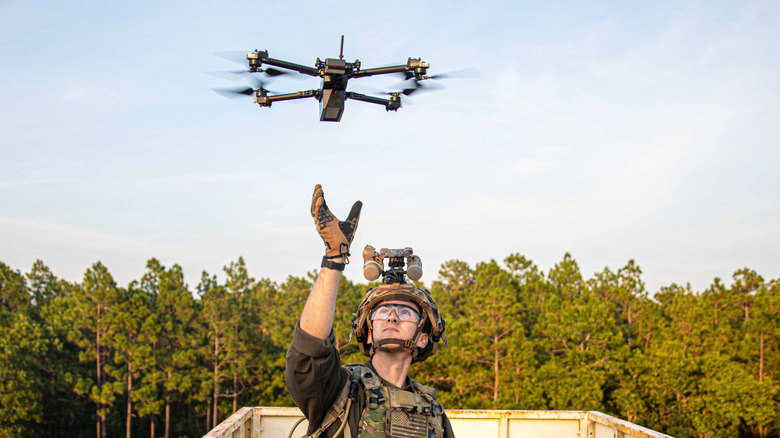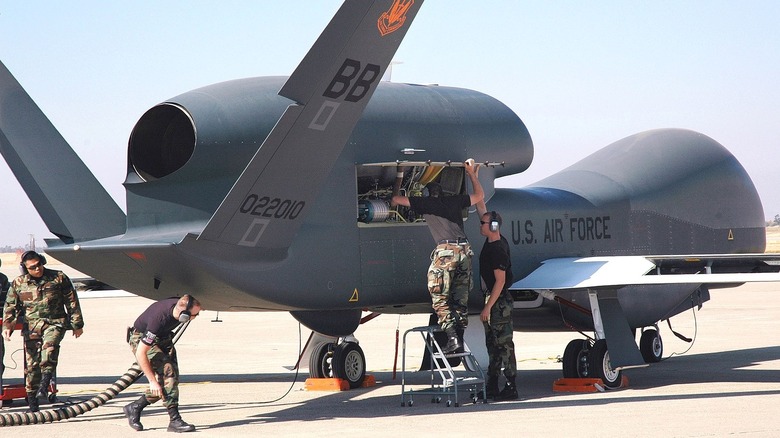How The US Could Upgrade Its Swarm Tech With Battlefield-Tested Ukrainian UAVs
On July 10th, 2025, Secretary of Defense Pete Hegseth published a memorandum called, "Unleashing U.S. Military Drone Dominance". In the memorandum, Secretary Hegseth called for three things including government support of domestic drone building through procurement, technological and manufacturing leapfrogging, and military training to fight in drone-on-drone warfare.
A few days later, Ukrainian president Volodymyr Zelenskyy announced that he and President Trump were engaged in talks regarding how the U.S. and Ukraine could support each other when it comes to drones. President Zelenskyy noted that the resulting drone 'mega deal' could be worth $30 billion. Ukraine has extensive experience with drones due to the ongoing defense against Russia's military invasion. This experience is recognized to the point that in the EU's European Defense Fund (EDF) and EU Defense Innovation Scheme (EUDIS) will include testing in Ukraine as part of their programs. The experience is in Ukraine, and Secretary Hegseth called for production in the U.S., so what needs to be done is to put these together.
Iterate or be grounded
Ukraine and the U.S. are similar in how they need to go about developing and procuring drones, especially in the volumes that today's swarms call for. Secretary Hegseth calls for cutting bureaucracy, changing how the military procures drones, and increasing the amount of American-made components. Ukraine has done this with unit commanders now having a pool of approved drone systems to order from. Ukraine's drone makers, who are worried about Chinese supplies, are manufacturing replacements domestically.
Also, manufacturers need to keep up with a constantly changing warfare environment, or the drone will become outdated quickly. This is what happened to Turkey's Bayrakter TB-2 drone, which Ukrainians initially praised for its performance. The manufacturer failed to match changing conditions, and the TB-2 is rarely seen now. To prevent this, some U.S. drone manufacturers are in Ukraine with development teams. America's Swift Beat has been working in Ukraine on several types of drones, and on July 3rd, 2025, signed an agreement to build hundreds of thousands of drones, including drone-interceptor drones, for Ukraine. Unlike current drones that rely on a human controller and a fiber-optic cable for command and control, Swift Beat's drones use AI and act independently.
All UAVs big and small
The U.S. provided vital intelligence with high-flying UAVs over the Black Sea and Ukraine in the run-up to Russia's full-scale invasion of Ukraine in 2022. Systems such as the Northrop Grumman RQ-4 Global Hawk have been providing a 60,000-foot high bird's eye view of theaters of operations since the turn of the century. Smaller drones such as the AeroVironment Switchblade 600 have had an impact on the front line, though not always as intended.
While noting that Ukrainian drone operators tended to prefer using the Switchblade against rarer and higher-value targets than the tanks they had been designed to attack, AeroVironment also noted that the company was improving the user interface but also pushing for approval from Washington to instruct operators from within Ukraine instead of sending them abroad for training. The case shows that Ukraine offers the U.S. an example of how to scale up to hundreds of thousands of drones quickly, how to iterate quickly — and why. Plus, with American companies in Ukraine, the U.S. may also a place to manufacture them.


